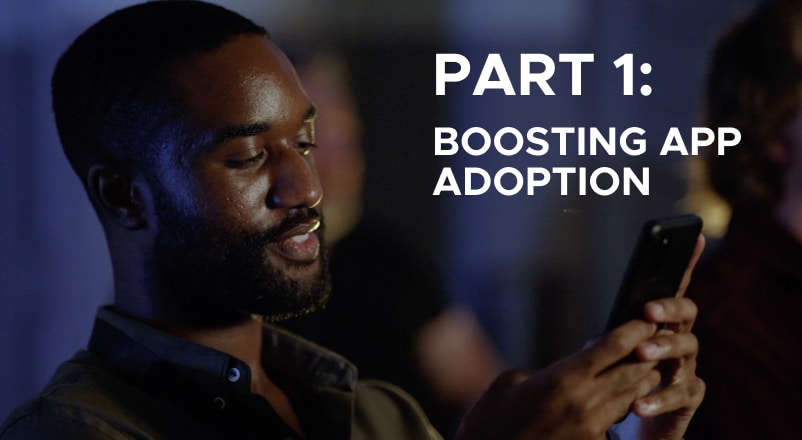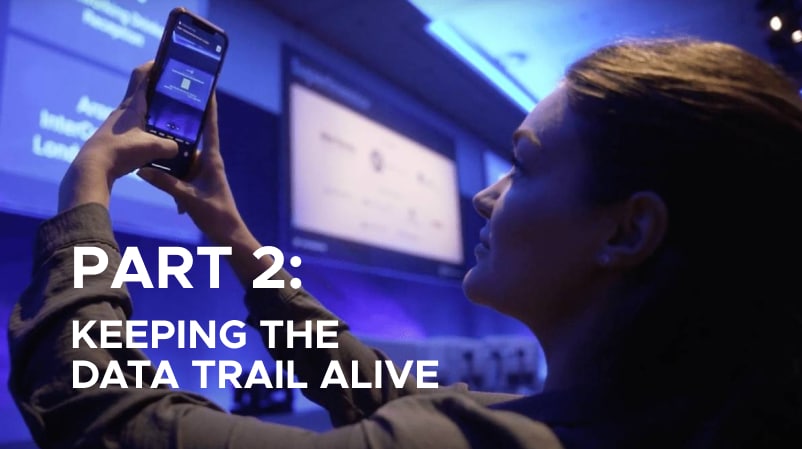
5 Ways to Use Smart Event Data to Create High-Value Audience Journeys
How corporate event planners can leverage event data to retain audiences and win more opportunities ...

In our previous blog we covered how to set out a results-driven smart event strategy. Now comes the next hurdle, making sure your audiences engage so you can get that great event data.
Mandating interaction is clearly not an option; Forbes detailed in a recent report that over 91% of consumers actually ‘hate’ being forced to download apps of any kind in order to complete an activity. Hate – I’ll just let that sink in. If people download your event app with a frustrated mindset they will naturally look for the negatives – a great shame because your event app has the power to greatly enhance the event experience for every attendee.
In this post we’ll examine the best ways to persuade your audience that your event app is a key part of how they get personal value from your event. We’ll also explore how to keep this interaction going in order to get that rich data that will ultimately make any smart event a success.

The two most popular uses of mobile event apps are still to build personalised event agendas and to network. If you can persuade your attendees that their peers and clients will be using the app to communicate both during and in the run-up to your event then you have won half the battle. Getting testimonials from people who are the most sought-after connections at your events and using this in your app marketing outreach is also highly valuable. If your key clients aren’t already using the app, reach out to explain you are seeking feedback to enhance the app experience and ask if they will participate.
Take the opportunity to promote key features in detail and their value proposition – ask your app provider to provide short videos if this helps. For example, as well as algorithmic matchmaking, Totem’s mobile app has Room Radar functionality allowing attendees to see who else has turned up and is physically in the session – a powerful incentive for anyone interested in networking.
Make sure you do a good job of reiterating the name of your app and ideally pick something that’s easily associated with how you brand your events. You can’t always rely on delegates spotting your QR code or flicking back through their email – many will try to remember the name by manually searching in the app store.
Also – consider adding a splash page on your event agenda webpage during the two weeks before your event. When people leave this page they could be encouraged to download your app to keep up with the latest changes.
It might be a blunt instrument but it’s a tried and tested technique and it works. You can try offering something very direct – a VIP event for the first 100 people to download the app, or a free cocktail or cloakroom ticket for anyone who logs on.
Some of our clients begin marketing their app two months before the event and others start two weeks prior. While it is a good idea to dedicate a specific sequence of emails with a single CTA to download the app, what is consistently powerful is including the app in the ‘before you go’ email sent a day or two prior to the event.
Event blogger Julius Solaris points to research that demonstrates we tend to use our smartphones while we are waiting. It follows, then, that any downtime, especially the gaps in-between or before sessions, is an ideal time to promote your app. Capitalise on this by adding small table-top pull-ups promoting the app where coffee is served, or on QR codes on registration desks and badge collection. Promote your app before the show starts in your show-opener or opening video and right before your keynote.
Set expectations so attendees know that when they get to the event there will be limited or no printed agendas and that they can build personal agendas and get meeting and session reminders through the app. Try to get sponsors on board as well so they also reduce the volume of printed collateral to encourage digital downloads using QR codes.
Ask your moderators to let the audience know before each relevant session gets going that there will be opportunities to complete polls or download supporting content. Make sure they leave enough time for audience members to complete polls, particularly if you have virtual attendees as well.

Spread polls throughout your event, so audiences have continued opportunities to use them, but ideally no more than three or four per session. Consider mixing the type of polls, for example including word clouds so that you can display results in different ways. Signpost audiences to more content at the beginning or end of your presentations, for example, videos from the speakers or sponsors. You could also pick a particular conference theme or problem to be solved and bring content together (either your own or from a cross-section of sponsors or partners) laying out a physical QR trail around your event.
Let people choose their menu options, view seating plans, sign up for socials and pre-order cocktails or coffees. What if delegates could book physical tables or rooms when meetings are arranged through the app, then scan a QR code to check in? Just make sure instructions are incredibly clear for attendees as well as everyone on the ground at your event.
Use push notifications wisely – directing people to relevant engagement opportunities and additional digital content. You may even want to experiment with a pop-up meet-the-speaker slot for your most popular sessions. If people add sessions to their agendas but aren’t identified as having checked in, you could also send them notifications or emails to let them know when that session is available on demand.
Data capture can also be improved by enticing people to complete pre or post-event polls with the promise of sending a copy of a research report or a piece of thought leadership.
If you segment panel discussions into three or so topic areas you can experiment with allowing your audience to vote using the app between A/B options for the final topic to be discussed. Great for audiences because it gives them a greater say over what’s covered, meanwhile you get more data about their interests.
Aligning gamification with a sustainability objective, or a cause close to your brand can be highly effective. For example one of our clients, Informa Connect, incentivised QR code scanning by using points that attendees can transfer into credits to plant mangroves as part of the Million Mangroves Project.
If we need audiences to part with their data, we also must be upfront in communicating how we will use it. Clearly communicate this well in advance and allow your audiences to set their preferences so they can opt out of receiving things like notifications on the app, should they choose.
The best way to get your audience on board with your event app is to position it as more than just a digitized version of your agenda. Take time to explain features they might not immediately be familiar with but are most likely to give them a direct return on the time they invest at your event.
Arouse curiosity, provoke FOMO, make it valuable, add incentives and build trust – if you can keep these five principles top of mind you’re off to a good start.
Let me know how it goes….
Our team of specialists are ready to help you shape your perfect engagement ecosystem.
020 7700 3632 hello@wearetotem.io 8 Hornsey StreetBy submitting this form, you are agreeing to Totem’s Privacy Policy and Cookie Policy.